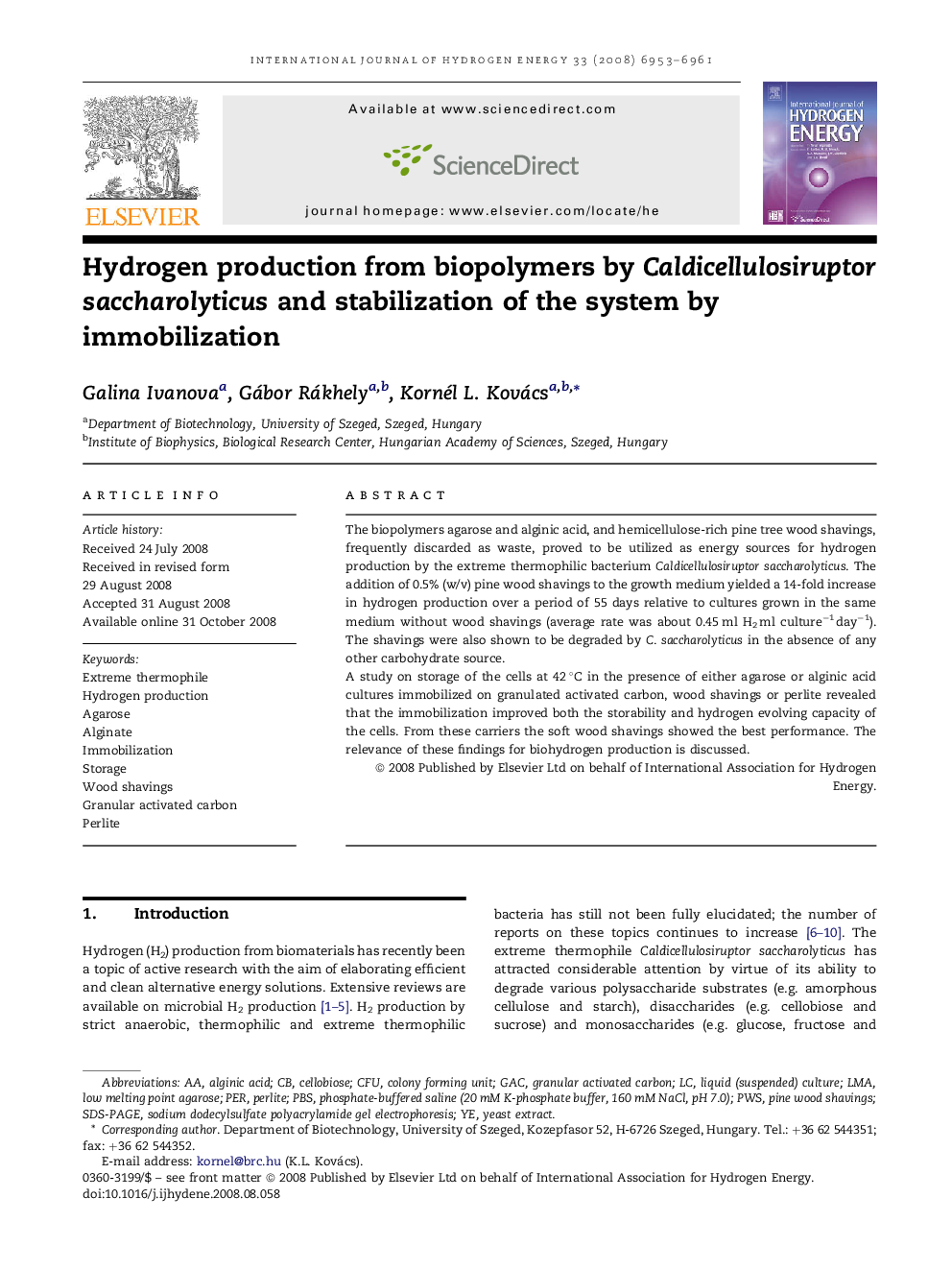| Article ID | Journal | Published Year | Pages | File Type |
|---|---|---|---|---|
| 1278236 | International Journal of Hydrogen Energy | 2008 | 9 Pages |
The biopolymers agarose and alginic acid, and hemicellulose-rich pine tree wood shavings, frequently discarded as waste, proved to be utilized as energy sources for hydrogen production by the extreme thermophilic bacterium Caldicellulosiruptor saccharolyticus. The addition of 0.5% (w/v) pine wood shavings to the growth medium yielded a 14-fold increase in hydrogen production over a period of 55 days relative to cultures grown in the same medium without wood shavings (average rate was about 0.45 ml H2 ml culture−1 day−1). The shavings were also shown to be degraded by C. saccharolyticus in the absence of any other carbohydrate source.A study on storage of the cells at 42 °C in the presence of either agarose or alginic acid cultures immobilized on granulated activated carbon, wood shavings or perlite revealed that the immobilization improved both the storability and hydrogen evolving capacity of the cells. From these carriers the soft wood shavings showed the best performance. The relevance of these findings for biohydrogen production is discussed.
